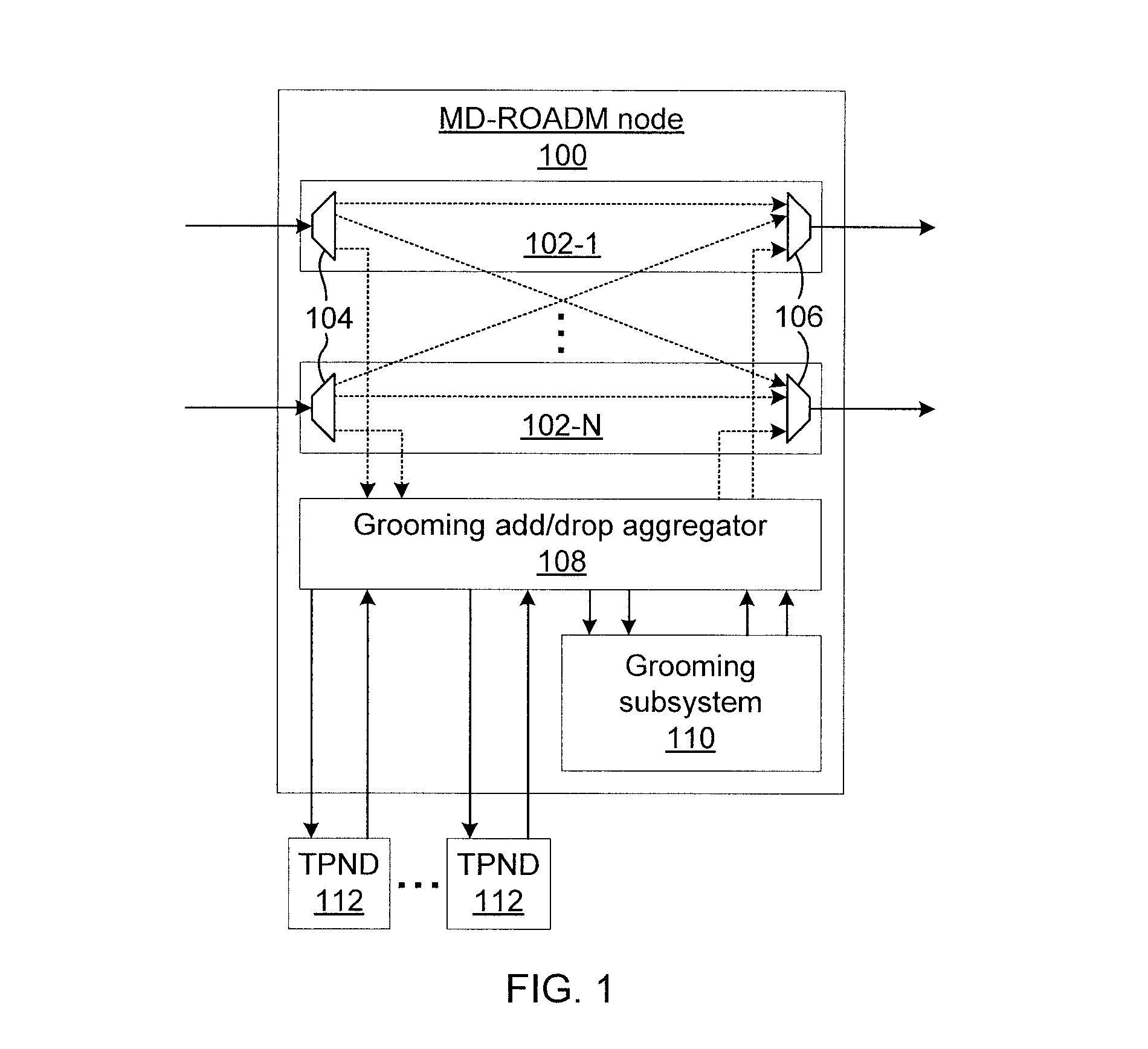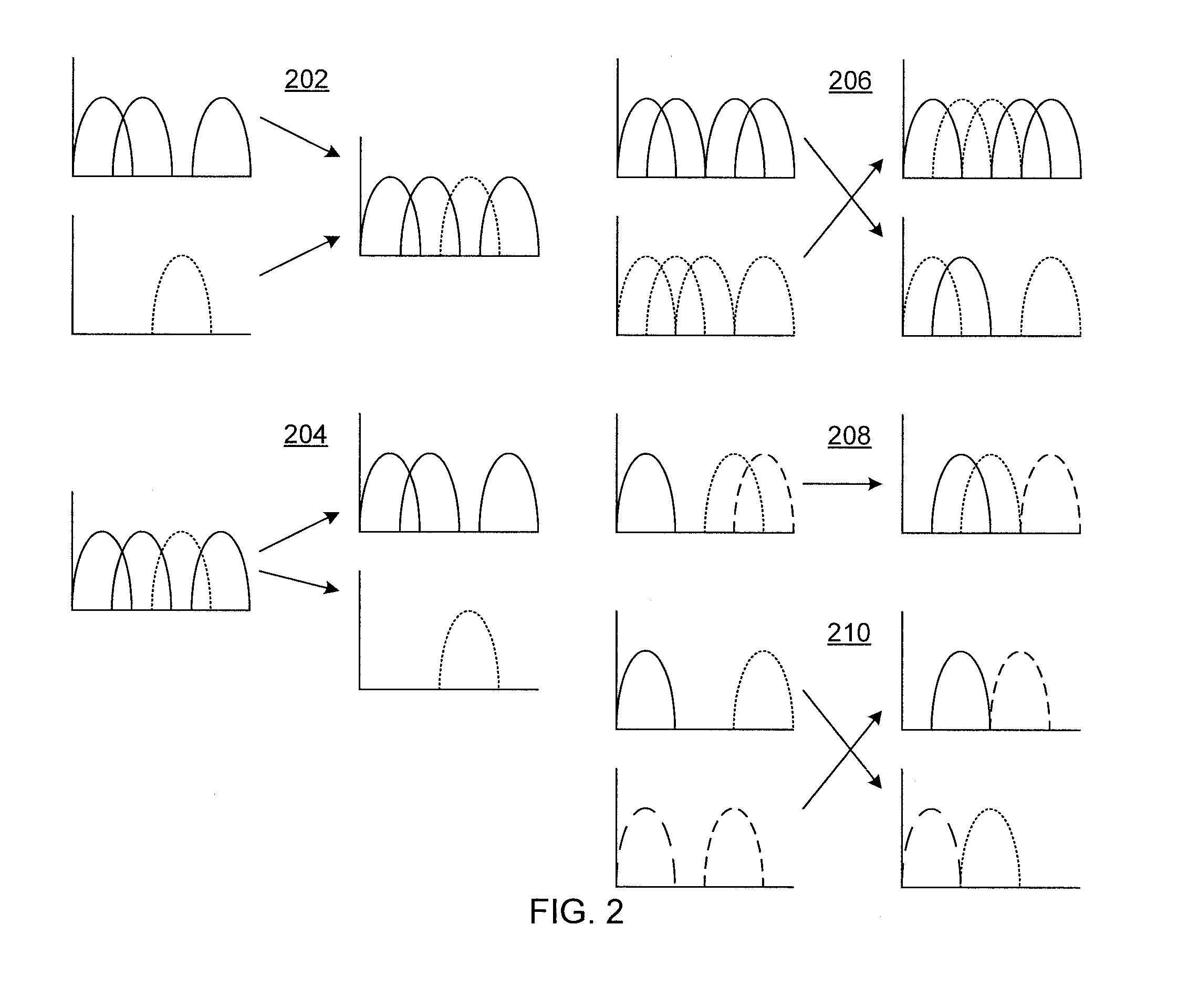Optical-layer traffic grooming in flexible optical networks
a flexible optical network and optical layer technology, applied in the field of optical wavelength division multiplexing network grooming, can solve the problems of multiplication (wdm, resource cost is amortized over the number of users, electronic grooming is not cost-effective or power-efficient,
- Summary
- Abstract
- Description
- Claims
- Application Information
AI Technical Summary
Benefits of technology
Problems solved by technology
Method used
Image
Examples
Embodiment Construction
[0019]Referring now in detail to the figures in which like numerals represent the same or similar elements and initially to FIG. 1, an exemplary optical grooming node 100 is shown. In an optical network, grooming is usually performed at either the source / destination node or at an intermediate switching node. The node 100 is shown as a multi-degree reconfigurable optical add / drop multiplexer (MD-ROADM) with grooming capability. The MD-ROADM may be implemented in, for example, an orthogonal frequency division multiplexing (OFDM) network. Advantages of OFDM include not requiring a guard band between subcarriers due to orthogonality between subcarriers, little guard band between wave division multiplexing (WDM) channels, and tolerance of chromatic dispersion and polarization mode dispersion.
[0020]The grooming MD-ROADM node 100 includes three optical subsystems with fiber connections between them. The MD-ROADM node 100 includes N reconfigurable optical add / drop multiplexer (ROADM) subsys...
PUM
 Login to View More
Login to View More Abstract
Description
Claims
Application Information
 Login to View More
Login to View More - R&D
- Intellectual Property
- Life Sciences
- Materials
- Tech Scout
- Unparalleled Data Quality
- Higher Quality Content
- 60% Fewer Hallucinations
Browse by: Latest US Patents, China's latest patents, Technical Efficacy Thesaurus, Application Domain, Technology Topic, Popular Technical Reports.
© 2025 PatSnap. All rights reserved.Legal|Privacy policy|Modern Slavery Act Transparency Statement|Sitemap|About US| Contact US: help@patsnap.com



